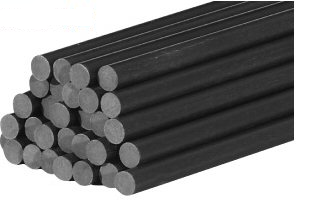
One of the most promising polymers for medical applications is one of the oldest known materials to man: silk, which was used in ancient China and Europe.
In a study published this summer in the Proceedings of the National Academy of Sciences, researchers at Tufts University report a method to maintain the potency of vaccines and other drugs that otherwise require refrigeration for months and possibly years at temperatures above 110ºF, by stabilizing them in a silk protein made from silkworm cocoons.
Late last year the Tufts group announced development of a silk-based microneedle system able to deliver precise amounts of drugs over time also without need for refrigeration.
Last spring, they demonstrated the first all-polymeric bone scaffold material that is fully biodegradable and capable of providing mechanical support during repair. The approach uses micron-sized silk fibers to reinforce a silk matrix, similar to the way steel rebar reinforces concrete. The goal is to improve the way bones and other tissues are repaired.
Professor David Kaplan, who has been leading the silk research at Tufts, says: “Silk protein has a unique structure and chemistry that makes it strong, resistant to moisture, stable at extreme temperatures and biocompatible, all of which make it very useful for stabilizing antibiotics, vaccines and other drugs. The fact that we can also make silk into microneedles to deliver a vaccine is an enormous added advantage that can potentially provide a lot of useful solutions to stabilization, distribution and delivery.”
Asked how he first became interested in silk as a medical engineering material. Kaplan told Plastics Today: “Over 20 years ago, I read an article about the mechanical properties of spider webs and was excited to learn more.”
Sources of the silk used in the Tufts studies varies.
“We either use textile silk and purify this for our studies, or we use genetic engineering approaches to generate variants of silk sequences to study.” Silk material obtained from the textile industry is generic, but the Tufts group can develop special features with its own spider silks.
Manufacturing system
A special manufacturing system was developed for the bone scaffold material. Alkali chemicals were used to break down complex molecules into building blocks, greatly reducing the time and cost of making microfibers in a variety of sizes. Microfibers from 10 to 20 µm were produced in one minute, compared with production of 100 µm plus size fibers after 12 minutes of conventional processing.
The Tufts work is not strictly an academic curiosity.
Public health authorities believe that that up to half of all global vaccines are lost due to breakdowns in the “cold chain.” Even in developed nations, loss of drug effectiveness is a serious problem for advanced pharmaceutical delivery systems such as implantable drug-coated devices.
Kaplan told Plastics Today that some of the Tufts developments have already been licensed and are now on the market, while others are in various stages of development.
Producing silk would seem more problematic than making other materials such as synthetic plastic, but Kaplan says silk textile production levels are already on a relatively large scale. “For the longer term, new modes for production are being pursued around the world as well – e.g., transgenic animals and plants as one example.”
SOURCE : http://www.plasticstoday.com/articles/silk-emerges-important-medical-engineering-polymer08020210201









